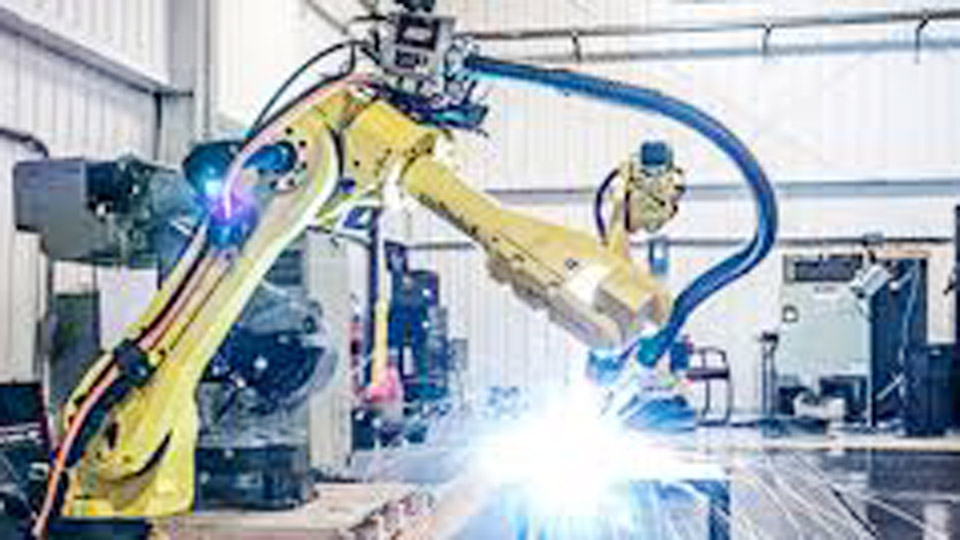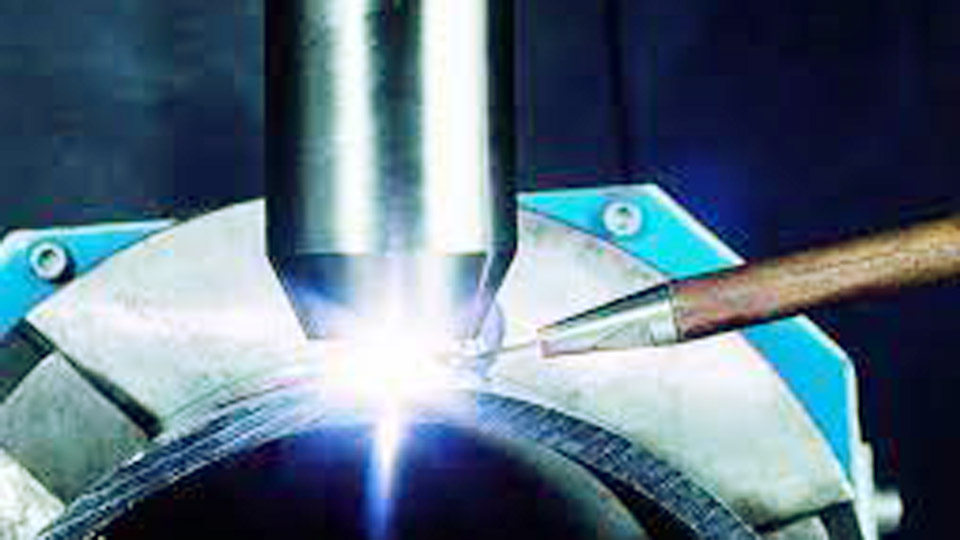I’ve spent quite a bit of time in the welding field, and when I first saw a plasma welding robot in action, I’ll admit—I was impressed. It wasn’t just about the technology.
It was about the precision, the consistency, and the potential it unlocked. Especially in industries where accuracy is everything, these robots are changing the game.

Image by robots.com
If you’re wondering what plasma welding robots really do, how they work, or if they’re worth it, then sit back because we’re going to explore all of that and more.
And don’t worry, I’ll break it down in simple terms, no complicated jargon, because welding should be something we all understand—if you’re a beginner or a seasoned fabricator. Let’s dive right in and explore this powerful, futuristic tool that’s already hard at work today.
What Is a Plasma Welding Robot?
In the simplest terms, a plasma welding robot is a robotic system that uses a plasma arc to join metal parts together.
Plasma welding is a type of arc welding that’s very precise. Unlike traditional methods, the plasma arc is focused and narrow, which gives it the ability to make extremely fine and clean welds.
Combine that with robotic automation, and you’ve got a machine that can weld with perfect consistency for hours on end without fatigue.
These robots are typically used in industries like aerospace, automotive, and electronics—basically anywhere that demands flawless, repeatable welding.
But don’t let that scare you away. They’re not just for big factories. Plasma welding robots are becoming more accessible even for medium-sized shops that want better quality and faster output.
How Plasma Welding Works (And What Makes It Different)
Here’s the cool part. Plasma welding uses a superheated ionized gas—called plasma—to melt the metals and fuse them together. Unlike MIG or TIG welding, the plasma arc is constricted, which means it’s highly concentrated and stable.
This gives you deeper penetration and cleaner welds with very little spatter. In robotic systems, this consistency is critical.
There’s no guesswork involved. The robot follows a programmed path and does the same job every single time—no shaky hands, no off-days.
Here’s a quick comparison to help:
| Feature | Plasma Welding | TIG Welding | MIG Welding |
|---|---|---|---|
| Arc Focus | Highly focused | Moderate | Wide |
| Precision | Very high | High | Moderate |
| Automation Compatibility | Excellent | Good | Excellent |
| Speed | Moderate | Slow | Fast |
| Heat Input | Low to Medium | Low | High |
| Material Suitability | Thin to medium materials | Thin materials | Thicker materials |
Why Use a Robot for Plasma Welding?
If you’ve ever done welding manually, especially on thin materials like stainless steel, you know how difficult it can be. One tiny movement and the whole weld is off. Plasma welding robots eliminate that risk.
Here are some real benefits I’ve seen:
- Precision Every Time: Robots don’t get tired. Every weld is consistent and accurate.
- Faster Production: You can weld more parts in less time. Simple as that.
- Better Quality Control: Clean, strong welds with less rework needed.
- Cost Savings Long-Term: While the upfront cost is higher, it pays off with lower scrap, fewer repairs, and higher output.
- Safe for Operators: Less exposure to heat, fumes, and UV light means a safer workplace.
This is especially helpful when working on complex shapes or delicate assemblies. The robot doesn’t hesitate. It just follows the path you program.
Where Plasma Welding Robots Are Used
These machines aren’t just found in one type of factory—they’re being used in a variety of industries. Let me walk you through a few real-world examples.
Aerospace Industry
The aerospace sector needs flawless welds. We’re talking about parts that go into jet engines or aircraft bodies. Plasma welding robots help ensure there are no weak points. Their precision is unmatched for the intricate work involved.
Automotive Industry
For car manufacturers, speed and consistency are everything. Plasma welding robots handle exhaust systems, chassis parts, and even battery cases for electric vehicles with ease.
Medical Device Manufacturing
Tiny surgical tools or stainless steel tubing require delicate welds. Manual welding can be risky here, so robots step in to make things more reliable.
Electronics Industry
Ever seen a robotic arm welding micro components? It’s a sight. Plasma welding robots help in assembling sensors, contacts, and intricate parts used in computers and communication devices.
Defense and Military
Robots are used in fabricating precision equipment like missile parts, protective gear, and vehicle armor.
As you can see, these robots are doing serious work—and doing it well.
Components of a Plasma Welding Robot
To understand how the whole system works, let me give you a rundown of what makes up a typical plasma welding robot.
Robotic Arm: This is the heart of the system. It moves along pre-programmed paths and positions the welding torch exactly where it needs to be.
Plasma Torch: This is where the magic happens. It creates the plasma arc using a high-frequency spark and a flow of ionized gas.
Power Supply: Supplies energy to generate the plasma arc.
Gas Supply System: Feeds shielding and plasma gas—usually argon or a mix—to the torch.
Control System: This computer-driven system lets you set welding parameters like travel speed, voltage, current, and arc length.
Cooling System: Plasma welding gets hot. A water-based cooling system helps keep everything under control.
Vision and Sensors (Optional): Some advanced systems include sensors to detect joint position, monitor weld quality, and adjust the process in real time.
Challenges of Using Plasma Welding Robots
I’d be lying if I said there were no downsides. Every system has its learning curve, and plasma welding robots are no different.
Here are a few things you might run into:
- High Initial Cost: These systems aren’t cheap. Between the robot, plasma unit, and integration software, it adds up.
- Programming Skills Required: Someone needs to program the robot, and that takes knowledge.
- Maintenance Needs: Like any machine, robots need regular upkeep.
- Not Ideal for Very Thick Materials: Plasma welding is great for thin to medium materials, but for very thick joints, it might not be your best option.
I’ll tell you this—once you get over the learning curve, these systems become workhorses.
Who Should Consider Plasma Welding Robots?
So, who benefits the most? If you’re running a fabrication shop, work in high-volume production, or just want to take your welding to the next level, this could be worth the investment.
Even if you’re not running a massive operation, if you need top-tier precision and consistent results, a plasma welding robot might just be what you’re looking for.
It’s especially useful if your jobs involve repeated parts, as you can program the robot once and let it do its thing.
How to Get Started with Plasma Welding Robots
If you’re seriously thinking about bringing one into your shop, here are a few steps to take:
- Assess Your Needs: Look at the materials you work with, the volume, and the complexity of your welds.
- Talk to Experts: Don’t hesitate to reach out to welding robot suppliers. They can help you find the right fit.
- Start with a Pilot Program: Some shops begin with one robot for a single task and expand from there.
- Train Your Team: Make sure your team is ready. Even if the robot does the welding, you’ll need people to operate, maintain, and fine-tune it.
My Personal Experience Using Plasma Welding Robots
Honestly, using a plasma welding robot has changed how I see welding as a whole. The precision blew me away at first, but what really stuck with me was how much it reduced our rework and scrap.
I used to spend hours rechecking welds, fixing defects, and cleaning up spatter. Now, it’s just smooth operation.
Once the program is dialed in, the robot runs like clockwork. And if you’re someone who takes pride in clean, sharp welds, this tool delivers just that.
Conclusion
Plasma welding robots are not just some futuristic gadget—they’re here, and they’re transforming how welding gets done.
If you’re building aircraft parts or just want better control in your fabrication shop, this technology can bring you cleaner, faster, and more consistent welds.
Yes, there’s an upfront investment, and yes, it takes some time to learn. But once you get the hang of it, the possibilities are endless. It’s like having a skilled welder on your team—who never gets tired and never makes a mistake.
If you’re someone who’s serious about quality and wants to scale your welding production, I can’t recommend exploring plasma welding robots enough. It’s a step forward worth taking.
Frequently Asked Questions
What is the difference between plasma welding and TIG welding?
Plasma welding is more focused and stable than TIG, allowing for deeper penetration and less spatter. It also works better in automated systems due to its consistency.
Can plasma welding robots work on aluminum?
Yes, they can. Plasma welding is suitable for aluminum, especially in thin sheets, but gas type and parameters need to be set correctly.
How much does a plasma welding robot cost?
Prices vary widely depending on the brand and features, but basic systems can start around $100,000 and go much higher.
Do I need special training to operate a plasma welding robot?
Yes, some training is needed. You’ll need to understand robotic programming, welding parameters, and safety protocols.
Is plasma welding better than MIG for automation?
It depends on the application. Plasma welding is more precise and better for thin materials, while MIG is faster and handles thicker materials better.







